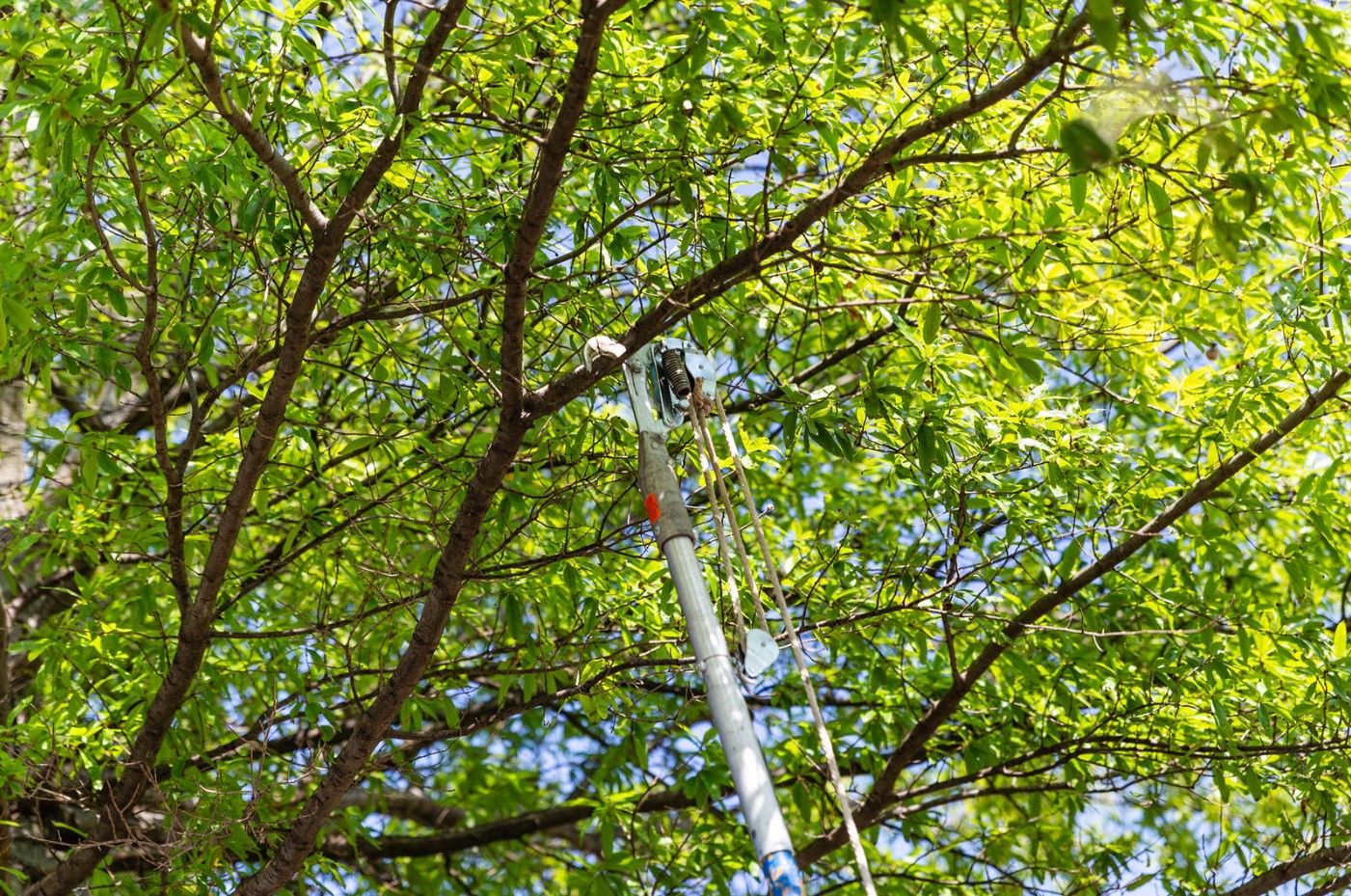Homeowners can easily become injured – many times fatally – while attempting to trim trees near overhead electrical wires. Though it is tempting to try to save money with this “do-it-yourself” approach, the potential for electrocution is not worth the risk.
Terrible accidents can happen when a homeowner uses pole-mounted cutting tools and/or metal ladders when attempting to trim backyard trees and shrubs. Too often, an energized overhead wire is not noticed and is touched by pruning tools, causing injury or death.
These are not freak accidents; they are preventable.
Tree limbs can conduct electricity. When trees grow near overhead electrical wires, they can contact the wires and become energized.
There are several things that can go wrong for do-it-yourselfers trying to trim tree branches. For example, if proper tree cutting techniques are not understood, the cut branch can swing in unpredictable directions as it falls and could easily land on an energized wire.
Don’t be fooled by the voltage of the lines. You may think that working on the trees or shrubs near your home’s service line is safer than working near the high voltage secondary distribution lines on the pole by the street, but that’s simply not true.
There are three-wire (called “triplex”) lines connecting the power lines on the pole to your house (meter). Service wires leading from the pole to the house can pack a punch. The type of shock you might have received (and survived) when changing a household light switch is not the same type of shock you will receive if you contact a low-voltage utility wire.
A common house circuit carries 120 volts but the electric flow is usually limited to 10, 15 or 20 amps. A common “house drop” (service wire) contains 240 volts and up to 60 amps or more. Given the right set of circumstances, even the shock a person gets from a common light switch can kill, but at the same time, it is easier to break electrical contact while standing inside a house. If a person is climbing a ladder or is in the tree, it may be more difficult to break contact with the energized wire. This means that the service line over a typical yard could easily kill a person.
Here are a few tips to avoid trees in wires:
• Look for power lines before pruning trees and large shrubs. If lines are anywhere near the tree, don’t attempt any tree work. Professional tree climbers have the training and equipment needed to perform these tasks safely.
• Never climb a tree in order to prune it. Even if the wires aren’t currently touching the tree, remember that the tree’s branches will shift once you begin climbing or removing limbs.
• Wearing rubber-soled shoes or rubber gloves while tree pruning will not prevent a fatal shock.
• Never extend long-handled saws or pruners into a tree without checking for power lines. Electricity is always trying to go somewhere, and it will easily travel through metal, water, trees, and/or the ground.
• Don’t move ladders or long-handled pruning tools around the yard without first looking up. Always read and heed ladder-use safety labels.
More importantly, call Abundant Tree Care Services. They have the knowledge, experience, and specialized equipment to care for your trees safely. For the safety of their employees and the public, Abundant Tree Care follows the ten-foot rule. If access is needed within ten feet of a power line, Abundant Tree Care will work with the electric company to make the line safe while the work is done.
Ask to see Abundant Tree Care Services certificate of insurance, and don’t forget to check with your insurance company to see if your policy covers the cost of tree services.
Call Us Anytime with Tree or Shrub Questions (618) 202-4209




